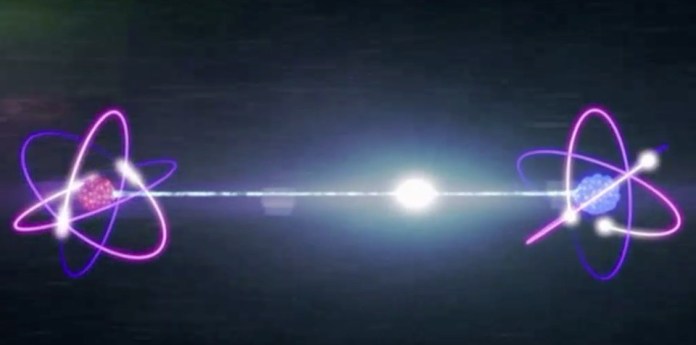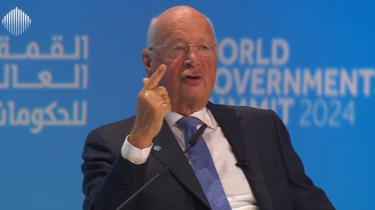A group of scientists backed by the EU’s Horizon 2020 report that they have harnessed the power of photons to develop light-speed networks, but are we actually looking at quantum entanglement?
Internet powered by light will soon become a reality. The EU-backed “Passion” group has combined laser sources with silicon photonics to develop long wavelength, high capacity communications for the very first time, paving the way for “light-speed” metropolitan connectivity.
According to a 2015 report on Phys.org, “A photonic chip would make the electronic router obsolete, removing the need to convert data from photons in optical fibres to slower electrons.”
“Photonics deals with the control and manipulation of photons, the building blocks of light—and by light, we’re talking about the electromagnetic wave,” said Professor Eggleton via Phys.org.
Light-speed Internet or Quantum Entanglement?
According to a statement to the press, Passion is creating “light-speed networks;” however, the idea of anything traveling at or exceeding the speed of light violates Einstein’s cosmic speed limit, which he spelled out in his Special Theory of Relativity.
So what exactly is going on with photonics with regards to powering “light-speed networks?” Is there an actual relationship between distance, time, and velocity, or is there a non-linear process that involves quantum entanglement where particles have an instantaneous connection regardless of distance?
Quantum entanglement is what Einstein called “spooky action at a distance.”
Science Daily describes it as, “a quantum mechanical phenomenon in which the quantum states of two or more objects have to be described with reference to each other, even though the individual objects may be spatially separated.”
Going back to the Phys.org article on photonics from 2015:
“Unlike electrons, which react with one another and allow for the switching on and off of a computer’s billions of transistors, photons don’t interact with photons—which is where non-linear optics comes in.”
According to the science journal Nature, “Nonlinear optics is the study of how intense light interacts with matter. The optical response of a material usually scales linearly with the amplitude of the electric field. At high powers, however, the material properties can change more rapidly. This leads to nonlinear effects including self-focusing, solitons and high-harmonic generation.” [Emphasis mine].
This suggests that photonics isn’t about actually traveling at the speed of light, but rather quantum entanglement.
“This makes possible the concept of an optical transistor, one whose process is instantaneous,” according to Phys.org.
Photonics Applications
With a budget of 8.5 million euros, Passion is looking to Vertical Cavity Surface Emitting Lasers (VCSELs) to power and connect everything from smart cities to sophisticated devices running music, video, gaming, AI, VR, and telecommunications.
“VCSELs will help us target the site of the ‘bottlenecks’: the Metropolitan Area Networks (MANs) interlinking users within a geographical area where all the internet traffic from a local area flows, and cope with the exponential growth in users and increasingly sophisticated services like gaming, assisted living and on-demand TV,” said Project coordinator Professor Pierpaolo Boffi, in a statement to the press.
While VCSELs (favored for their rapid data transmission and low power consumption) have been used in data communications for short-distance connections in intra-data centers, using these infrared lasers for long wavelength, and high capacity communications has never been done before to connect our cities.
“Our researchers are developing a flexible network architecture that will be optimized for metropolitan applications based on aggregated signal flows. A tenfold reduction in power consumption will be achieved by exploiting the full wavelength spectrum and the space dimension in a multi-core fibre,” added Boffi.
VCSELs, the key components in 3D sensing, are currently used in popular electronics platforms, for example, in range finders for smart phone cameras such as Face ID and Animoji.
However, deploying such a technology in silicon photonics for high speed internet connections for the metropolitan area is a real challenge.
“VCSELs could be the next big leap in metro communications,” said Passion project manager Paola Parolari.
“They are already employed widely in data communications, in intra-data centre short-distance connections for example. However exploiting VCSELs, emitting at long wavelengths and integrated in silicon photonics to realize multi-channel modules with very high communication capacity can have tremendous impacts on the fibre networks of our cities in terms of cost, footprint and energy saving,” she added.
Photonics Will Make Fibre Optic Networks Obsolete
In order to support a low energy, sustainable communications infrastructure with new photonics technologies, the Passion group came together to tackle the incoming capacity limitations in optical fibre networks in our cities.
“If we are serious about having super-connected citizens, using broadband services such as telework, improved entertainment such as HD and 3D TV on demand, or gaming, remote healthcare, assisted living, enhanced social networking, ‘eLearning’ for example, we need a fibre optic network that is leagues ahead of where it is now,” said Boffi.
“We need a lighter and more flexible internet with low energy consumption. Otherwise, the future internet costs will be unsustainable,” he added.
Passion is an ambitious project to realize a platform based on photonic technologies supporting the development of the future metropolitan communications network, characterized by very high transmission capacity, low cost and reduced energy consumption.












